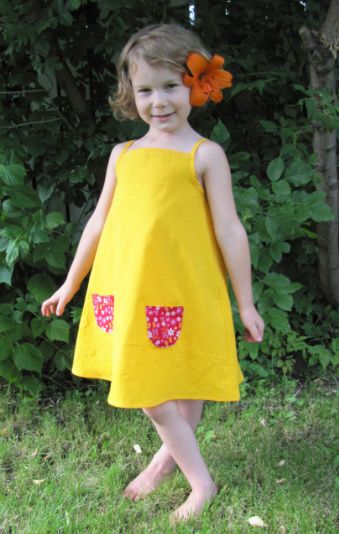 During a recent little heat wave, the ease and functionality of the basic sundress - no ruffles, no layers, no sleeves - become rather urgent. Believe it or not, but there are very few 'plain' dresses around here. Smootch's taste tends to run towards drag queen and I try stay out of wardrobe decisions. The high temperature, though, wore Smootch down and a dress without any extras to trap heat and a wide enough base to get a little breeze going was requested.
During a recent little heat wave, the ease and functionality of the basic sundress - no ruffles, no layers, no sleeves - become rather urgent. Believe it or not, but there are very few 'plain' dresses around here. Smootch's taste tends to run towards drag queen and I try stay out of wardrobe decisions. The high temperature, though, wore Smootch down and a dress without any extras to trap heat and a wide enough base to get a little breeze going was requested.Crafts for summer: solar dress free pattern for kids
kids craft ideas
Happy to oblige, little lady.
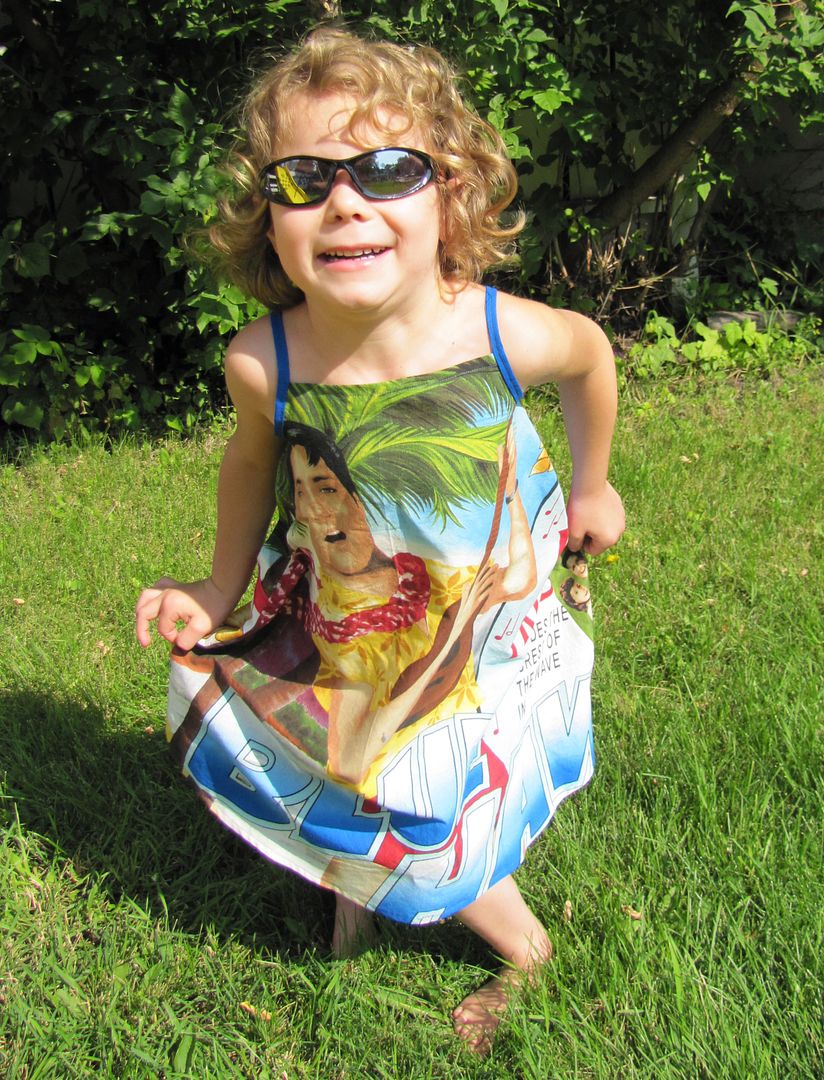 This dress is a simple as I could design, while keeping my mind on wear-ability beyond these few weeks of summer weather. I like a loosely fitting bodice area, with room to grow, and adjustable straps that allow for shirts underneath without getting all bunchy and awkward are nice too. A plain Jane front allows for pockets and embellishments to be added later to make something old seem new. A classic A-line shape works great as a pinafore over fall and winter tees and sweaters.
This dress is a simple as I could design, while keeping my mind on wear-ability beyond these few weeks of summer weather. I like a loosely fitting bodice area, with room to grow, and adjustable straps that allow for shirts underneath without getting all bunchy and awkward are nice too. A plain Jane front allows for pockets and embellishments to be added later to make something old seem new. A classic A-line shape works great as a pinafore over fall and winter tees and sweaters.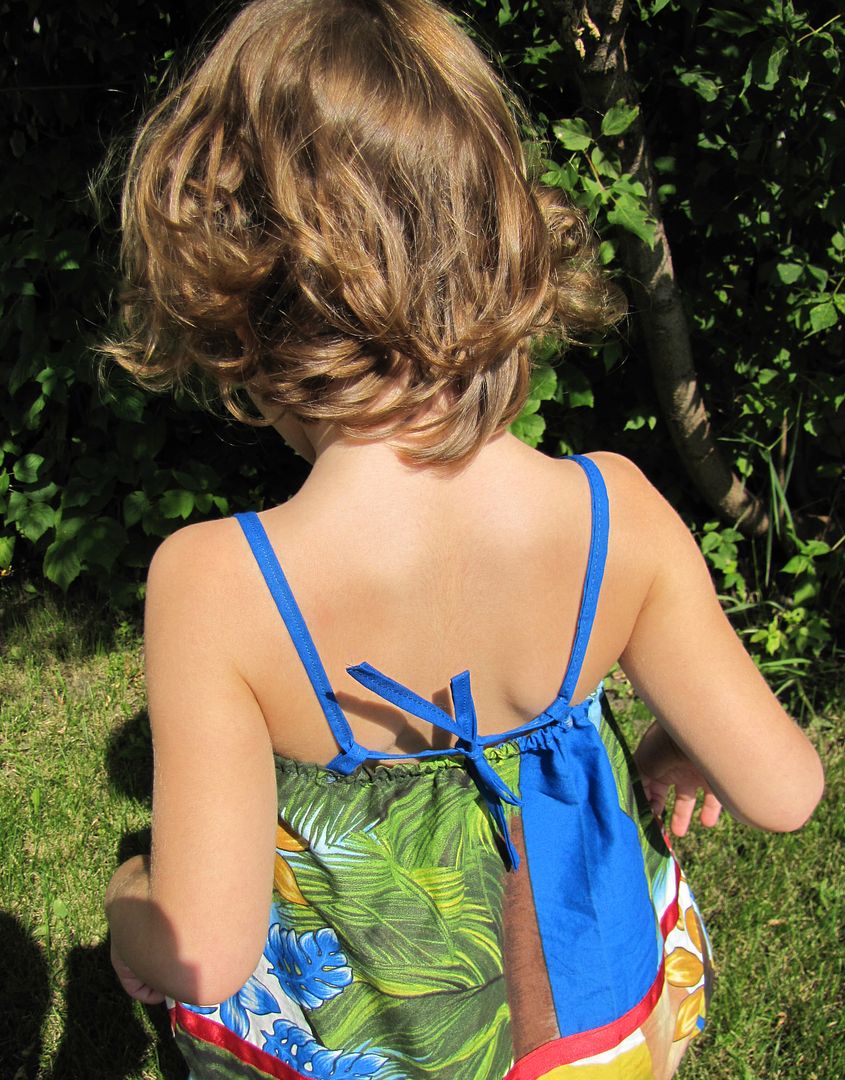
I'm feelin' pretty good about this one.
Which is why I thought I would make it available as a free pattern for y'all.
The Solar Dress comes in sizes 2/3, 4/5, and 6/7. The sizes are approximated to the US standard sizes (such as you would buy in ready to wear). To give you some idea, Smootch is a petite almost six year old, wears a US 5, and is wearing the Solar Dress size 4/5. Of course, the dress is quite forgiving size-wise, being of simple design, so do not get too hung up on the exactness of it all. (The designer certainly didn't :D)
To assemble the dress, in addition to light or medium weight fabric (try cotton or linen) and coordinating thread, you will also need some 1/4" elastic orclear elastic.
Now before you go clicking the link to get the pattern pieces, I'm going to warn you that the file is rather large. Sorry. I got carried away when drawing out the pattern and coloured the whole thing in.
We got playing.
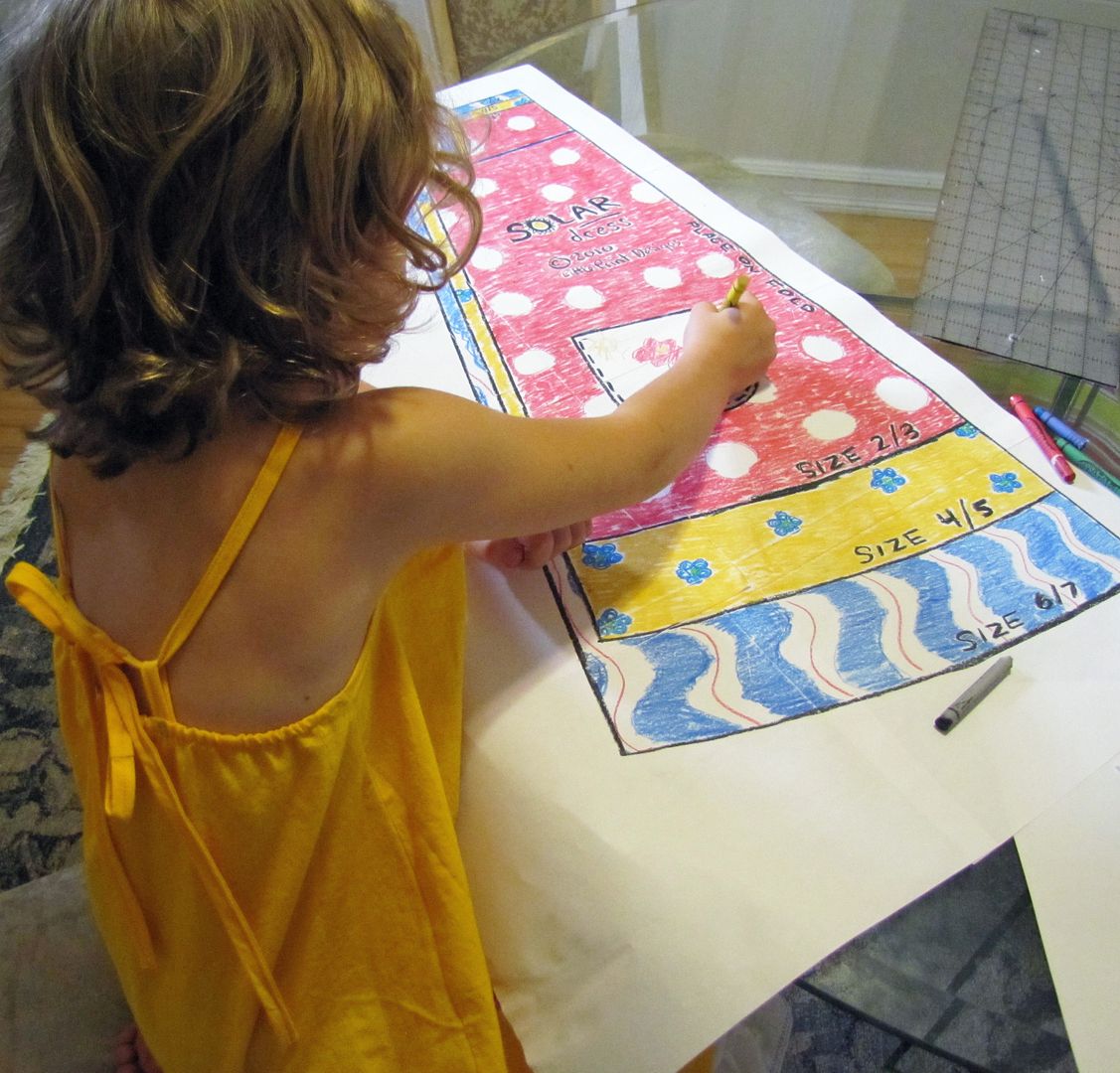
(Print in 'fast' and 'grayscale' when printing if you don't want to blow out your ink cartridge. If you guys have too many problems with the file, let me know and I will draw up a basic version, sans all the colours.)
Print the Solar Dress pattern at a 1:1 scale (or 'no scaling') for correct size.
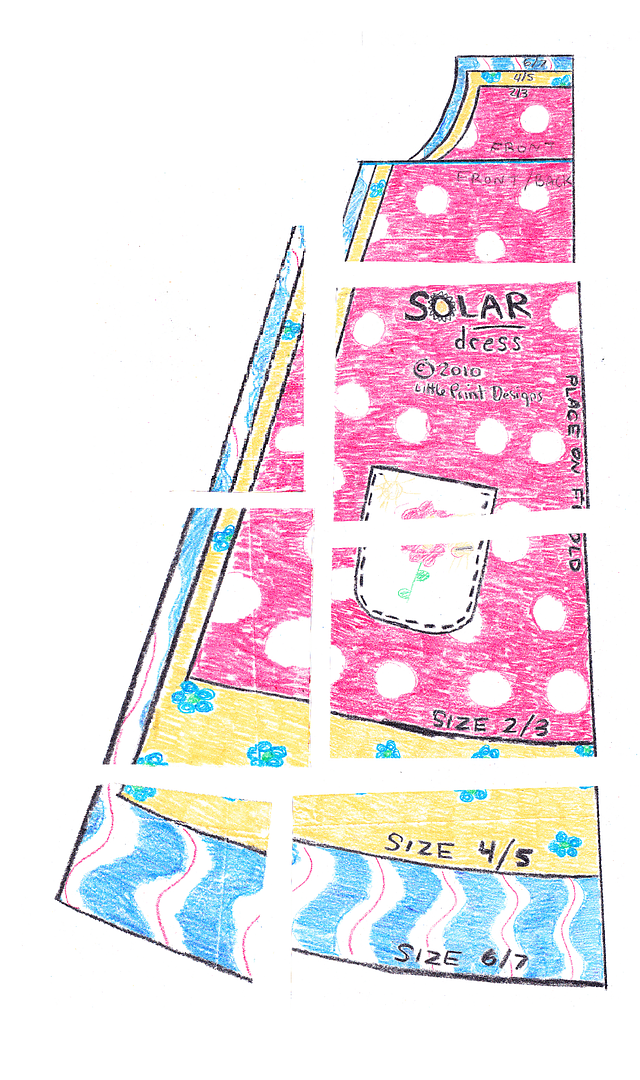 Assembling the Pattern Puzzle
Assembling the Pattern PuzzleThe first thing to do is assemble the ePattern.
Cut out each piece from the file and assemble the pieces as roughly shown in the illustration on the right.
Align each piece flush as indicated by the lines and colours (it'll all look right as you put it together) and tape together.
The pocket piece is intended to be traced onto another piece of paper, using the drawn pocket as a guide for shape and placement. You could actually cut it straight out the the assembled pattern, however, if you do not mind a big pocket shaped hole in the middle.
Cutting the fabric
To begin, determine your desired size and either trace onto a separate paper or cut along the appropriate line as indicated on the pattern piece.
To cut out the front of the dress, place the full pattern along fabric folded grain-wise, folded edge of fabric aligned with long side of pattern marked 'FOLD'. Cut out piece. (PATTERN INCLUDES SEAM ALLOWANCE - DO NOT ADD SEAM ALLOWANCE WHEN CUTTING OUT FRONT.)
To cut out the back of the dress, fold the paper pattern piece on the dark line running from arm base across chest. The back shape is cut from this dark line and below (the top inch or two is eliminated). Folding saves your pattern, paper, and time, not having to cut out an entire new piece for the back along. With the pattern folded, align in the same manner on folded fabric as you did on the front. As you cut ADD ONE INCH OF ADDITIONAL MATERIAL ON THE TOP OF THE DRESS. This is adding some fabric to put in the elastic back, not accounted for in the pattern.
Additional pieces of fabric needed are bias cut strips for the straps and ties. If you would like to use store bought bias tape, that is excellent, use a double folded version, or you can make your own by cutting stripes of fabric 1 1/2" wide at a 45 degree angle from the fabric grain. Use an iron to press a double fold into the strips and conceal the raw edges. Do not sew the edges closed just yet.
The two straps made of bias tape need to be about 25" to 35" long, depending on your desire for short or long straps and size of dress. For bottom loops to tie straps to, cut two additional pieces of double fold bias tape each about 2" long.
Cut out four pieces of pocket.
Assembling the dress
Start by finishing the top edge of the dress front with a double folded hem.
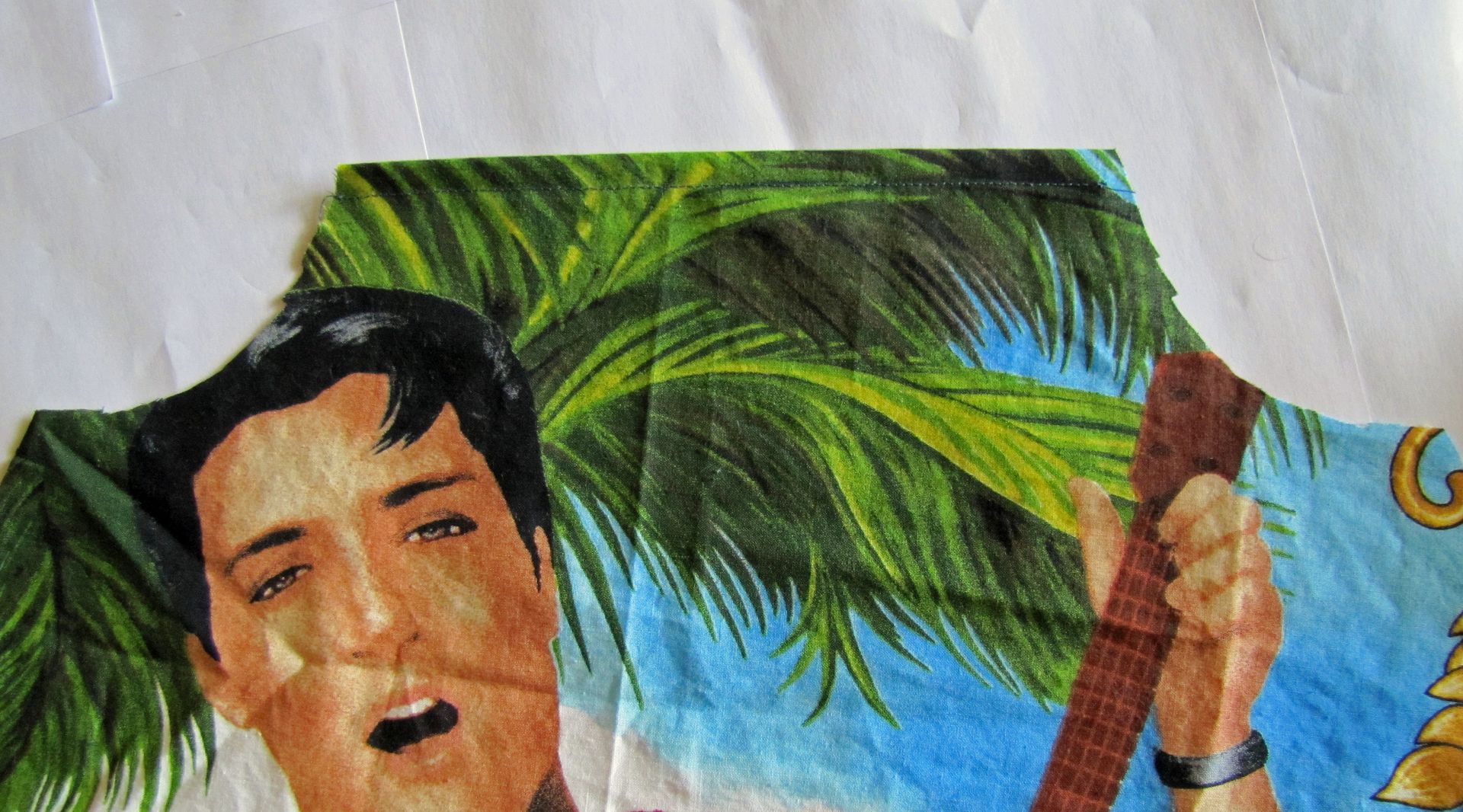
With your bias tape straps, fold one end of each strap to conceal raw edges. Open up bias tape and align the unfinished end with the arm curve on the front piece. With the tape still open, machine baste the raw edge of the bias tape to the edge of the arm curve (see thisbias tape discussion for more information).
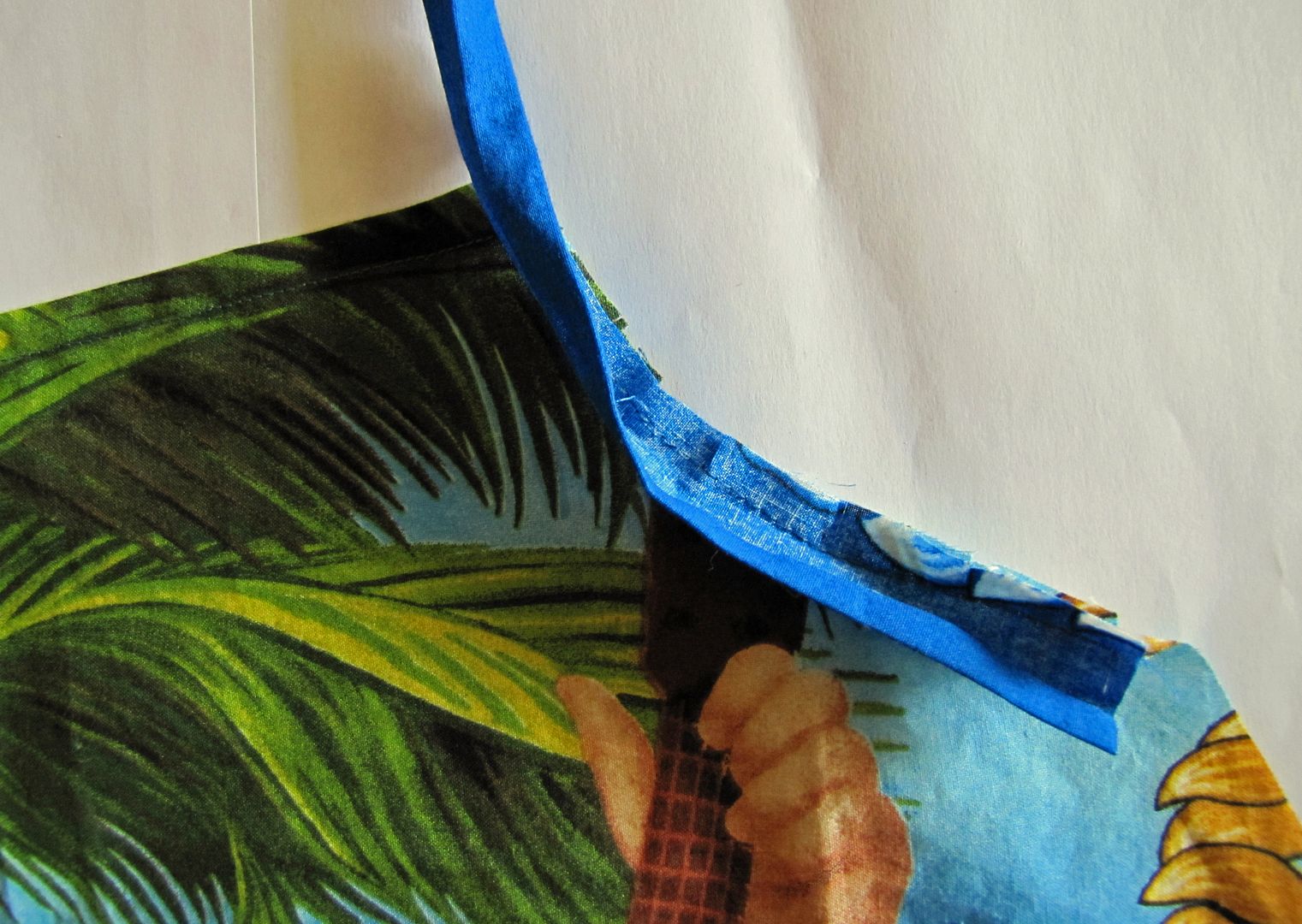
Fold closed the tape over the edge of the arm curve. Stitch close to the edge of the tape along the entire length, finishing the arm curve and closing the strap. Repeat for other strap.
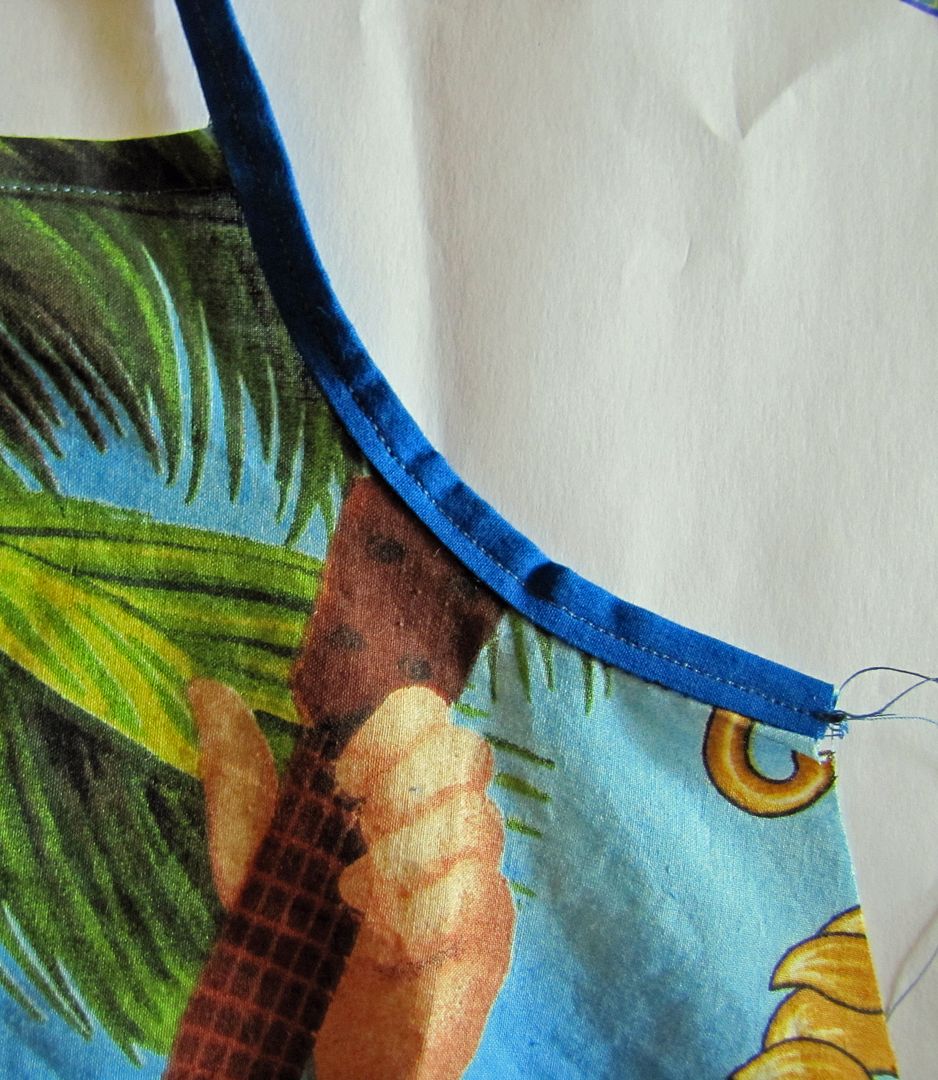
(Okay, confession: I'm not actually using bias tape above because of the limitations of the fabric panel I chose. It looks not so smooth - your bias tape will look nicer, trust me.)
Sew a pocket by placing two pocket pieces right sides together and stitching together the curved sides, leaving the straight top open. Turn the pocket right side out, fold the raw edges in on the straight side, and press flat. Stitch the straight side closed. Stitch on the pocket, in the position indicated on the pattern paper, by stitching the curved sides to the dress close to the edge. Be sure to secure the top edges with a few extra stitches for extra strength where it is likely to be pulled on often. Repeat for other pocket.
The top of the back is finished with a piece of thin elastic sewn in. Cut a length of elastic 8" to 10" long (depending on size used). Whether using clear elastic or regular 1/4" elastic, stretch it out along the length of the top raw edge on the back and machine baste the elastic directly to the dress, stretching while sewing.
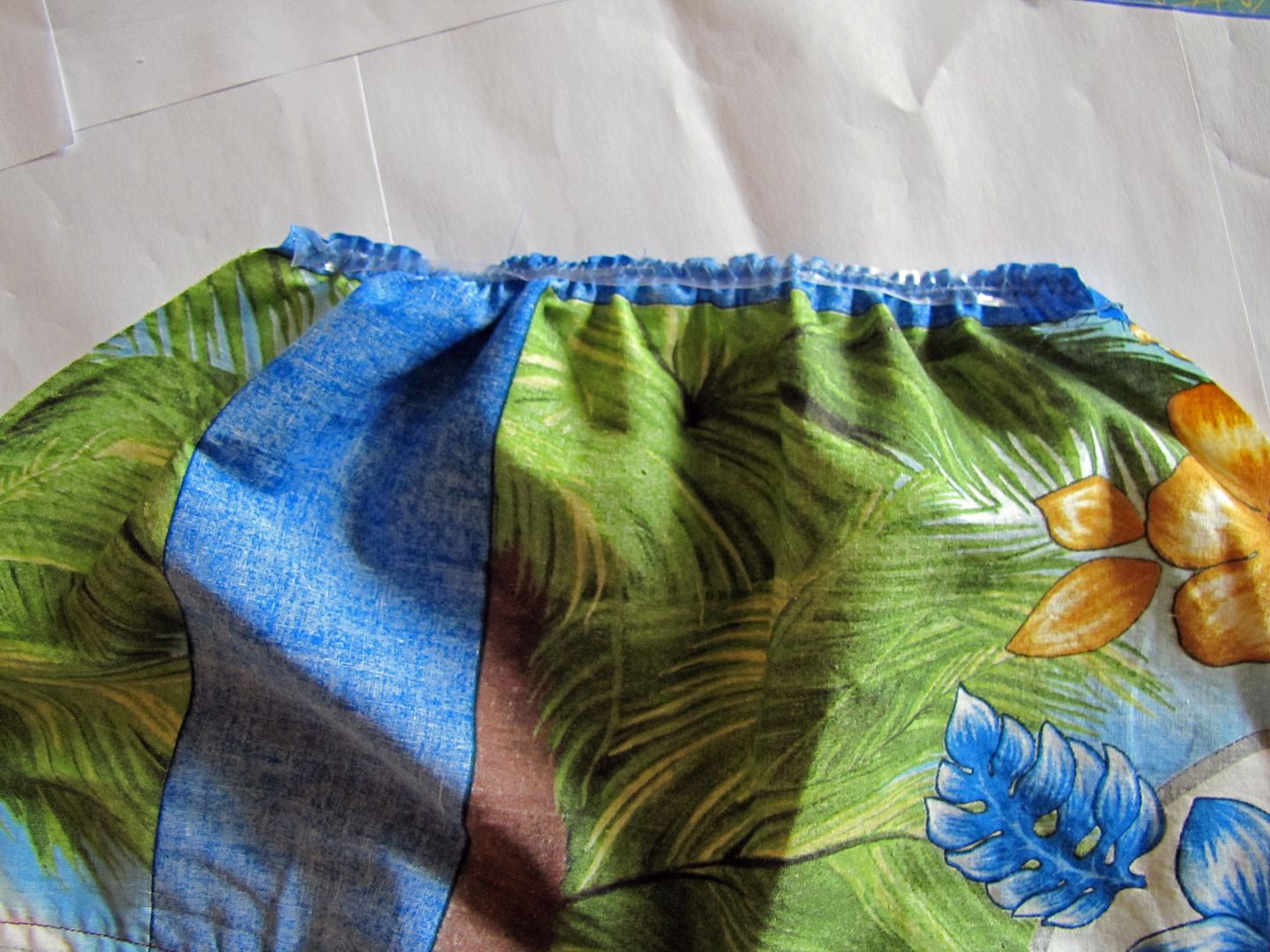
Fold down the elasticized edge into a double fold and stitched closed, again stretching while sewing (this can be tricky, I admit. Pins help :)
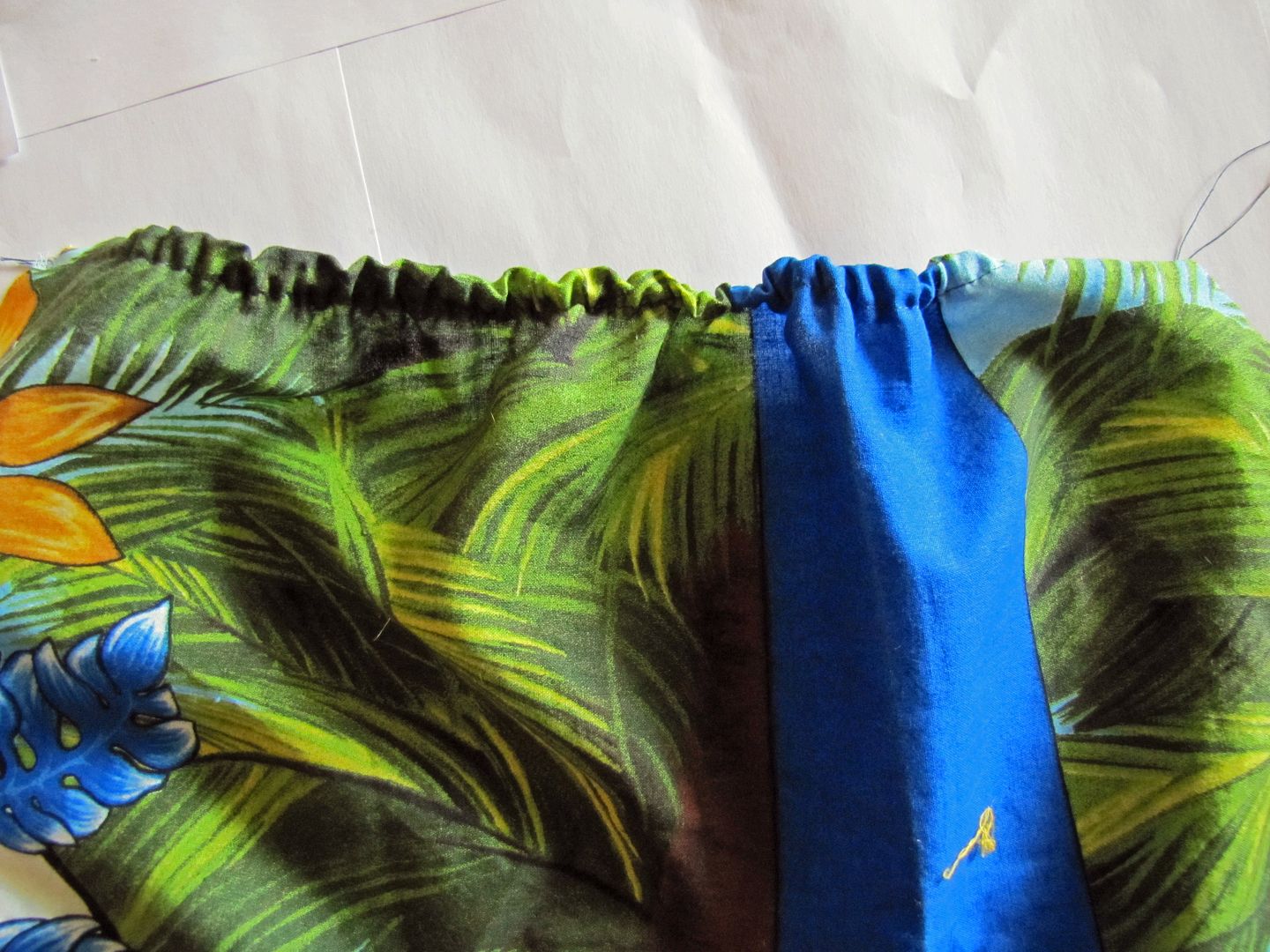
For the back loops, sew closed the 2" long strips of bias tape. Fold loops in half and stitch to elasticized hem, each approximately 3" from the side edge. Or whatever seems like a good distance.
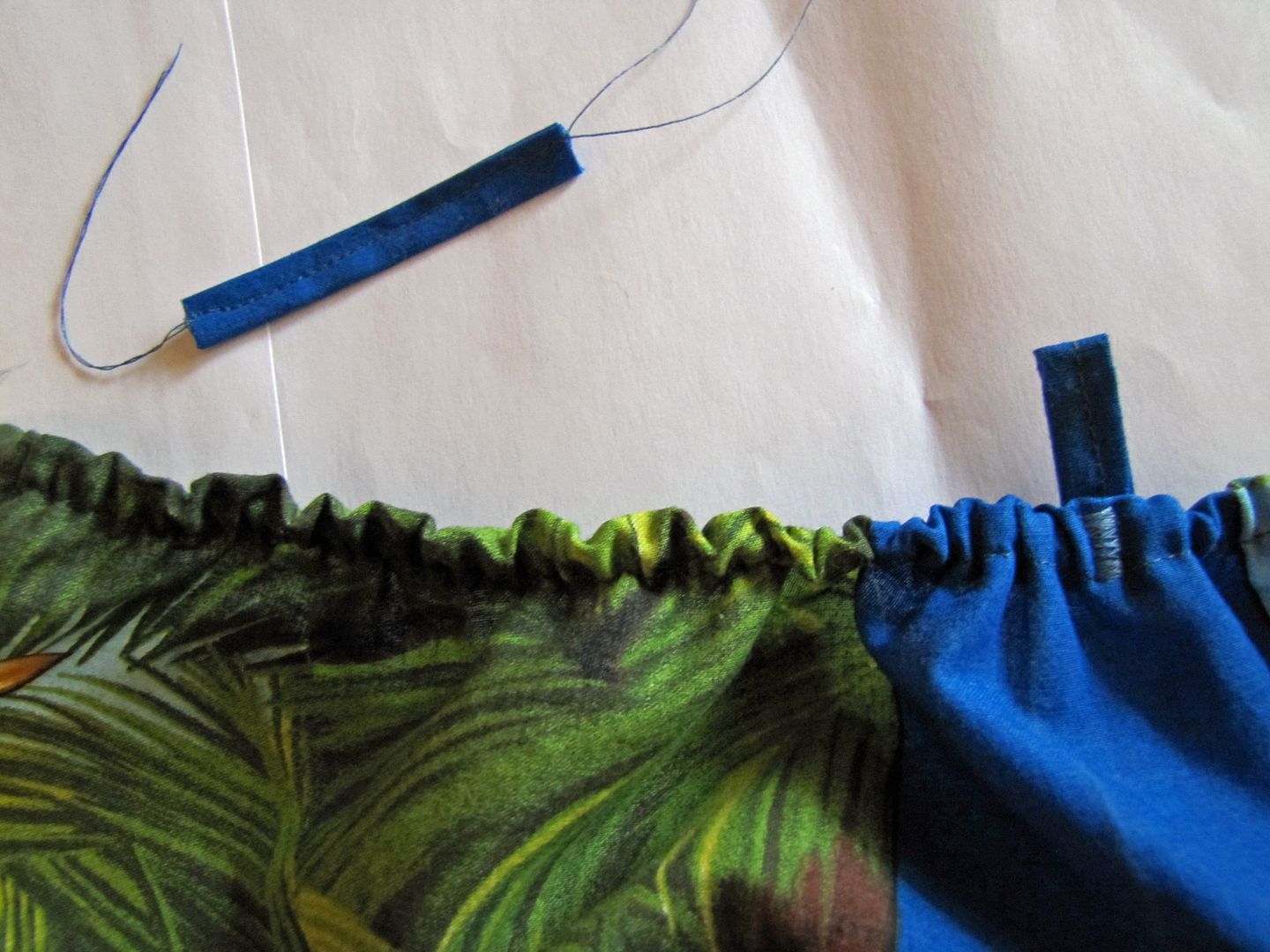
With all straps and loops in place, and the top edges of the front and back pieces finished, you can now stitch the front to the back, right sides together, along the entire length of both sides (stitch from the top down) using a 3/8" seam allowance. I like to stitch the seam flat at the top edge under the arm to avoid irritating sticky-outty seams.
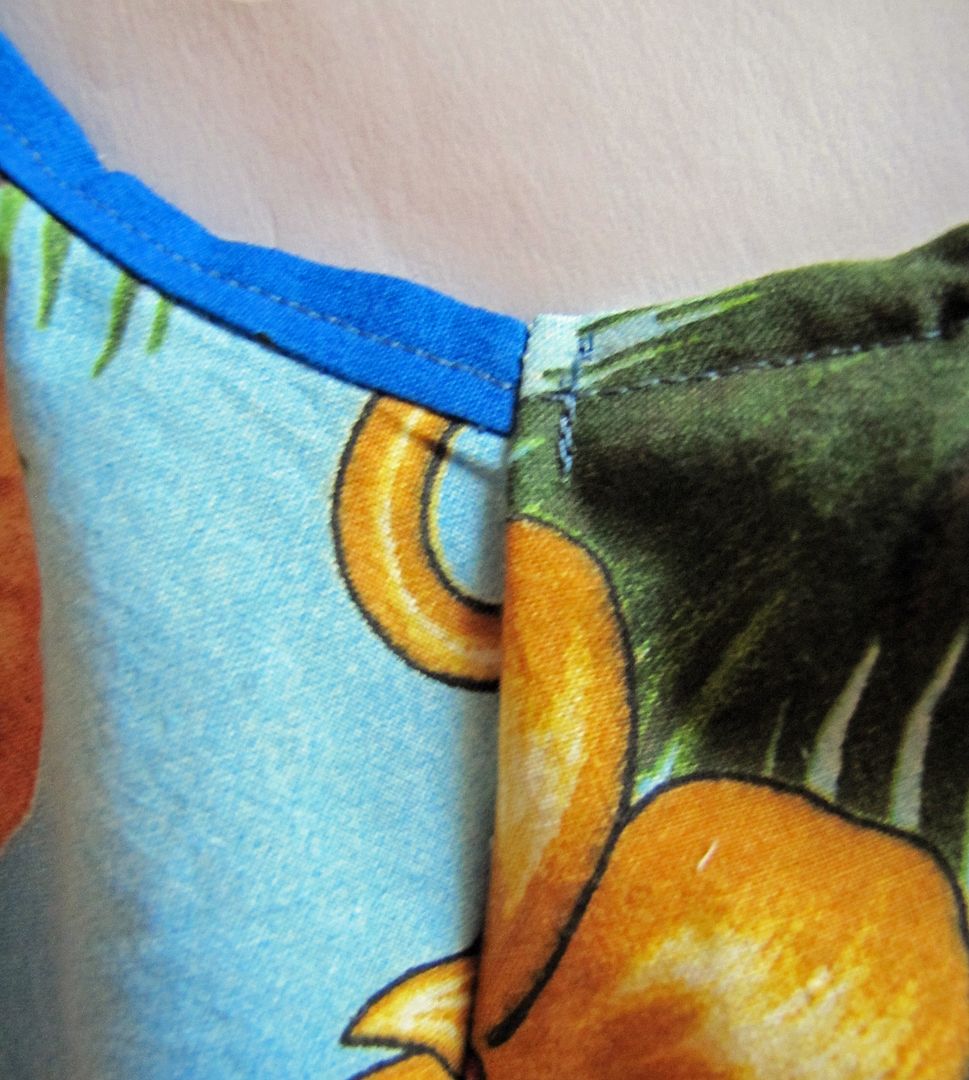
Finish the bottom hem and you've also finished the dress. To do up the straps, run the ends of the straps through the loops and tie together in the middle.

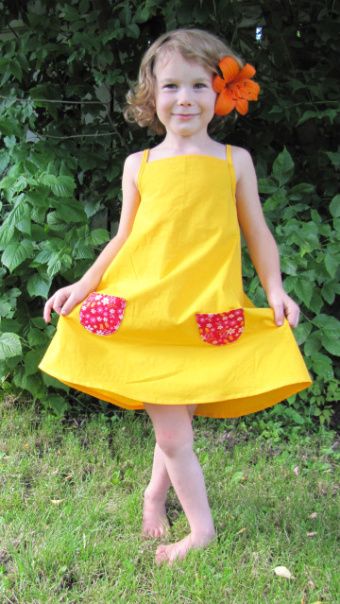
Source: indietutes.blogspot.com

Không có nhận xét nào:
Đăng nhận xét